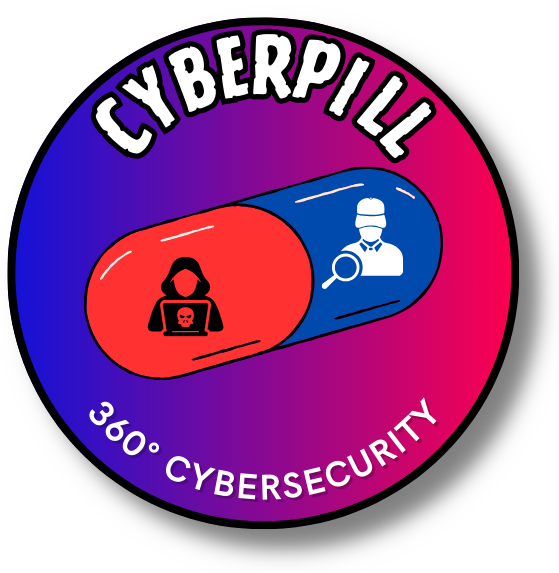In “Insider Threats: Safeguarding Your Business,” Dark Reading explores the importance of protecting your business from internal security risks. While most companies focus on external threats, insider threats can be just as damaging. The article highlights the potential damage that insiders can cause and offers valuable tips on how to mitigate this risk. By understanding the motivations behind insider threats and implementing effective security measures, you can safeguard your business and ensure its continued success.
Insider Threats: Safeguarding Your Business
Insider threats pose a significant risk to businesses of all sizes and industries. These threats occur when individuals with authorized access to company systems, data, or facilities misuse their privileges for malicious purposes, either intentionally or inadvertently. As a business owner or manager, it is crucial to understand the nature of insider threats, the common motivations behind them, and the warning signs to look out for. By implementing appropriate prevention measures and educating your employees, you can mitigate the risk of insider attacks and safeguard your business.

Understanding Insider Threats
Insider threats refer to any potential risk posed by individuals who have legitimate access to your organization’s sensitive information or resources. The scope of these threats can vary widely, from accidental data breaches to intentional acts of sabotage. It is important to recognize that not all insider threats are malicious, and many incidents occur due to human error or negligence.
Examples of insider threat incidents include employees leaking sensitive information to competitors, stealing intellectual property, accessing customer data without authorization, or intentionally disrupting critical systems. These incidents have the potential to cause significant financial losses, reputational damage, and legal repercussions for the affected organizations.
Types of Insider Threats
Insider threats can be classified into three main categories: malicious insiders, accidental insiders, and compromised insiders.
1. Malicious Insiders: These individuals intentionally misuse their authorized access to cause harm to the organization. They may be motivated by financial gain, a desire for revenge or disgruntlement, or even espionage. Malicious insiders are typically employees or contractors who have an intimate understanding of the organization’s systems and processes.
2. Accidental Insiders: Accidental insiders are individuals who unintentionally cause a security incident or data breach due to carelessness, lack of awareness, or inadequate training. They may inadvertently disclose sensitive information, fall victim to phishing attacks, or mishandle data. Accidental insiders often result from a lack of understanding of security best practices rather than malicious intent.
3. Compromised Insiders: Compromised insiders are individuals whose authorized access credentials have been stolen or compromised by external attackers. Cybercriminals may obtain login credentials through phishing attacks, social engineering, or malware, allowing them to impersonate legitimate employees and carry out malicious activities within the organization.
Understanding these different types of insider threats is essential for developing comprehensive prevention strategies and mitigating the associated risks.

Common Motivations for Insider Threats
To effectively address insider threats, it is crucial to understand the motivations that drive individuals to misuse their authorized access. While not all insider threats are driven by malicious intent, certain common motivations can help identify potential risks within your organization.
1. Financial Gain: One of the most prevalent motivations for insider threats is financial gain. Employees may steal sensitive data, trade secrets, or customer information to sell it on the dark web or to competitors. Some may also engage in insider trading or fraud schemes to benefit financially.
2. Disgruntlement or Revenge: Employees who feel aggrieved or mistreated by their organization may resort to insider threats as a form of revenge. They may deliberately sabotage systems, leak confidential information, or disrupt business operations to harm the company or specific individuals within it.
3. Espionage: In some cases, insider threats are motivated by corporate espionage. Competing organizations or foreign entities may infiltrate your workforce with the aim of gathering sensitive information, trade secrets, or intellectual property. These insiders often have a predetermined agenda and may work covertly to achieve their objectives.
4. Accidental Data Exposure: Not all insider threats are intentional. Accidental exposure of sensitive data can occur when employees mishandle information or fail to follow proper security protocols. This may happen due to lack of awareness, inadequate training, or simple human error.
Understanding these motivations can help you identify potential insider threats within your organization and implement appropriate prevention measures.
Recognizing Warning Signs
Detecting and recognizing the warning signs of insider threats is crucial for early intervention and prevention. While it is challenging to identify every potential threat, there are common indicators that may raise suspicion and warrant further investigation. Some warning signs to be aware of include:
1. Unusual Behavior or Work Patterns: Pay attention to employees who display sudden changes in behavior, including increased secrecy, unexplained absences, or erratic work patterns. These could be signs of potential malicious intent or compromised credentials.
2. Unauthorized Access Attempts: Monitor for any unusual or unauthorized attempts to access sensitive systems, files, or restricted areas. Multiple failed login attempts or repeated access requests beyond an employee’s normal scope of responsibility may indicate a potential insider threat.
3. Excessive Data Downloads or Transfers: Keep an eye on employees who download or transfer an unusually large amount of data, particularly if it involves sensitive or confidential information. This could signal that an insider is attempting to steal or misuse company data.
4. Changes in Attitude or Job Satisfaction: Employee dissatisfaction or sudden changes in attitude towards work and colleagues may be indicative of potential insider threats. Disgruntled employees are more likely to engage in malicious activities or sabotage business operations.
5. Unexplained Financial Troubles: Financial difficulties, such as mounting debts or sudden lifestyle changes, may motivate employees to engage in insider threats for financial gain. Be vigilant for signs of unexplained wealth or spending beyond an employee’s means.
Recognizing these warning signs requires ongoing monitoring, regular communication with employees, and a culture of trust and openness. Encouraging employees to report suspicious activities and creating channels for confidential reporting can also aid in early detection.

Implementing Insider Threat Prevention Measures
Preventing insider threats requires a multi-faceted approach that combines technological controls, personnel management, and ongoing education and awareness programs. By implementing the following prevention measures, you can significantly reduce the risk of insider attacks:
1. Creating a Strong Security Culture: Foster a culture of security awareness and prioritize cybersecurity throughout your organization. This includes promoting the importance of data protection, maintaining a strong security posture, and encouraging employees to report any security concerns.
2. Implementing a Comprehensive Data Security Policy: Develop and enforce a detailed data security policy that outlines the procedures and protocols for handling sensitive information. The policy should cover data classification, access controls, data retention, and incident response procedures.
3. Securing Physical Access to Sensitive Areas: Implement physical security measures, such as access controls, surveillance systems, and visitor management protocols, to restrict unauthorized entry to sensitive areas. Regularly review and update access permissions based on employees’ job responsibilities.
4. Implementing Role-Based Access Controls: Grant access privileges based on employees’ roles and responsibilities, following the principle of least privilege. Limiting access to only the information and systems necessary for employees to perform their jobs reduces the risk of unauthorized data exposure.
5. Implementing Least Privilege Principles: Adopt the principle of least privilege across your organization, ensuring that employees have the minimum level of access necessary to perform their tasks. Regularly review and update access permissions based on employees’ job responsibilities.
6. Implementing Multi-Factor Authentication: Enable multi-factor authentication for all systems and applications, requiring employees to provide additional verification beyond passwords. This adds an extra layer of security by mitigating the risk of stolen or compromised credentials.
7. Monitoring and Logging User Activities: Deploy user activity monitoring tools to track and log employees’ actions within your organization’s systems. Regularly review activity logs for any suspicious patterns or anomalies that may suggest insider threats.
8. Regularly Updating and Patching Systems: Keep your organization’s systems, applications, and security software up to date with the latest patches and updates. Regularly apply security patches to address any known vulnerabilities that could be exploited by insiders.
9. Implementing Data Loss Prevention Solutions: Use data loss prevention (DLP) solutions to monitor and control the flow of sensitive information within your organization. DLP tools can help detect and prevent unauthorized data exfiltration or accidental data exposure.
10. Conducting Regular Security Training and Awareness Programs: Provide comprehensive security training and awareness programs for all employees, emphasizing their role in preventing insider threats. Train employees on cybersecurity best practices, safe use of technology, and how to recognize and report potential threats.
By implementing these prevention measures and maintaining a proactive approach to security, you can significantly reduce the risk of insider threats and protect your business from potential harm.
Employee Education and Awareness
A critical component of preventing insider threats is educating and raising awareness among your employees. Employees should have a clear understanding of security policies and procedures, the potential risks associated with insider threats, and the consequences of their actions. By investing in employee education and awareness, you can build a strong line of defense against insider attacks.
1. Training Employees on Security Policies and Procedures: Develop a comprehensive training program that covers your organization’s security policies, procedures, and best practices. Ensure that employees understand how to handle sensitive information, recognize security threats, and report suspicious activities.
2. Educating Employees on the Risks and Consequences of Insider Threats: Provide employees with knowledge about the different types of insider threats, their potential impact on the organization, and the legal and ethical implications. Help them understand the importance of maintaining the confidentiality, integrity, and availability of company data.
3. Encouraging Reporting of Suspicious Activities: Establish clear channels for reporting suspicious activities or security incidents. Assure employees that their concerns will be taken seriously and that their identity will be protected. Encourage a culture of reporting and make employees aware of the benefits of early detection and intervention.
4. Promoting a Culture of Security Awareness: Foster a culture of security awareness and make cybersecurity a shared responsibility across the organization. Encourage employees to stay vigilant, follow security best practices, and report any security concerns promptly. Regularly communicate security updates, reminders, and success stories to maintain awareness and engagement.
By educating employees on the importance of security and their role in preventing insider threats, you can create a united front against potential risks.

Access Controls and Segregation of Duties
Implementing robust access controls and segregation of duties is essential for preventing insider threats. By defining access control policies and roles, separating incompatible tasks, and adhering to the principle of least privilege, you can limit the potential for malicious insiders to exploit their access privileges.
1. Defining Access Control Policies and Roles: Clearly define access control policies that specify who has access to sensitive data, systems, or areas within your organization. Assign access privileges based on employees’ roles, responsibility levels, and the principle of least privilege. Document these permissions in a centralized access control matrix.
2. Implementing Separation of Duties: Ensure that incompatible tasks are separated among employees to prevent collusion or unauthorized access. By segregating duties, no single individual will have complete control over critical processes or information. This reduces the risk of insider threats and increases accountability.
3. Implementing Principle of Least Privilege: Grant employees the minimum level of access necessary to perform their job responsibilities, based on the concept of least privilege. Regularly review and revoke unnecessary or excessive privileges to reduce the attack surface.
4. Regularly Reviewing and Updating Access Controls: Continuously monitor and review access controls to ensure they align with employees’ changing roles and responsibilities. Implement a process for requesting and approving access changes, and periodically review access permissions to ensure they remain appropriate and necessary.
By implementing strong access controls and segregation of duties, you can limit the potential impact of insider threats and mitigate the risk of unauthorized access or data breaches.
Continuous Monitoring and Auditing
Continuous monitoring and auditing of user activities, network traffic, and data transfers are essential for detecting and preventing insider threats. By implementing monitoring solutions and analyzing security events in real-time, you can identify suspicious behavior, respond promptly to potential threats, and prevent security incidents from escalating.
1. Implementing User Activity Monitoring Solutions: Deploy user activity monitoring tools that capture and analyze employees’ interactions with key systems, applications, and data. These solutions can help identify unusual patterns, unauthorized access attempts, excessive data transfers, or suspicious behavior that may indicate insider threats.
2. Performing Regular Audits of User Activities: Conduct regular audits of user activities to verify compliance with security policies and identify any anomalies or deviations. Audits can help identify potential insider threats, errors, or policy violations that require further investigation or remediation.
3. Monitoring and Analyzing Network Traffic and Data Transfers: Implement network monitoring tools to analyze incoming and outgoing network traffic, identify potential data exfiltration attempts, and detect any unauthorized or abnormal data transfers. Analyzing network logs and flow data can provide valuable insights into insider threats or compromised systems.
4. Implementing Intrusion Detection and Prevention Systems: Deploy intrusion detection and prevention systems (IDPS) to monitor network traffic and detect any signs of malicious activity. IDPS solutions can help identify potential insider threats by analyzing network packets, identifying known attack signatures, and flagging suspicious behavior.
5. Implementing Security Information and Event Management (SIEM) Solutions: SIEM solutions aggregate and analyze security events from various sources, enabling real-time monitoring and alerting. By centralizing security event data and correlating it with user activity logs and network traffic data, SIEM solutions can enhance threat detection capabilities.
Continuous monitoring and auditing provide valuable insights into your organization’s security posture, enable early detection of insider threats, and facilitate proactive incident response.

Data Loss Prevention
Data loss prevention (DLP) solutions play a crucial role in preventing insider threats by monitoring, controlling, and protecting sensitive data within your organization. DLP solutions help identify and prevent unauthorized data exfiltration, accidental data exposure, or policy violations, significantly reducing the risk of insider-driven data breaches.
1. Implementing Data Classification: Classify your organization’s data based on its sensitivity and criticality. By labeling data with appropriate classification tags, you can prioritize protective measures and ensure that sensitive information is adequately protected.
2. Monitoring Data Transfers and Storage: DLP solutions can monitor data transfers and storage locations to detect and prevent unauthorized attempts to copy or transmit sensitive data. They can also enforce encryption protocols, prevent data leakage through removable devices or cloud applications, and enforce data retention policies.
3. Detecting Policy Violations: DLP solutions can help identify policy violations and enforce data loss prevention policies within your organization. They can prevent employees from sending sensitive information through unsecured channels, encrypt data according to predefined rules, or block unauthorized access attempts.
4. Educating Employees on DLP Best Practices: Raise awareness among employees about the importance of data protection and how DLP solutions work. Train them on how to handle sensitive data in compliance with DLP policies and procedures, including identifying and reporting potential data breaches.
Implementing DLP solutions tailored to your organization’s needs can significantly enhance your ability to prevent data loss caused by insider threats and protect sensitive information.
Security Incident Response and Management
In the event of an insider threat incident, having a well-defined security incident response plan is critical for effective containment, investigation, and mitigation. By establishing clear procedures and roles, your organization can respond promptly and minimize the damage caused by insider threats.
1. Developing a Comprehensive Incident Response Plan: Create a detailed incident response plan that outlines the step-by-step procedures to follow in the event of an insider threat incident. This plan should include clear communication channels, escalation processes, and predefined roles and responsibilities for incident response team members.
2. Regularly Testing and Exercising the Incident Response Plan: Regularly test and exercise your incident response plan through simulated scenarios or tabletop exercises. This helps identify any gaps or weaknesses in the plan, familiarizes incident response team members with their roles, and ensures a coordinated and effective response in real-life situations.
3. Monitoring and Analyzing Security Metrics and Indicators: Continuously monitor and analyze security metrics and indicators to detect potential insider threats and measure the effectiveness of your prevention measures. Establish key performance indicators (KPIs) and conduct regular assessments to identify areas for improvement and track progress.
4. Continuously Improving Security Processes and Controls: Use insights gained from incident response activities and security metrics analysis to enhance your organization’s security processes and controls. Regularly review and update policies, procedures, and technologies to adapt to evolving insider threat landscapes.
By following a well-defined incident response plan and continuously improving your security processes and controls, you can minimize the impact of insider threats and quickly recover from security incidents.
Best Practices for Addressing Insider Threats
In addition to the specific prevention measures outlined above, adopting best practices for addressing insider threats can further strengthen your organization’s security posture. By integrating these best practices into your security strategy, you can proactively address potential vulnerabilities and reduce the risk of insider-driven security incidents.
Some best practices to consider include:
1. Regularly Assessing and Updating Insider Threat Prevention Measures: Continuously monitor and assess the effectiveness of your insider threat prevention measures. Regularly update policies, procedures, and technologies to address emerging threats and evolving business requirements.
2. Collaborating with Human Resources and Legal Departments: Establish close collaboration between the IT security team, human resources, and legal departments to address potential insider threats systematically. This collaboration can help identify potential risks during the employee lifecycle and ensure appropriate actions are taken when necessary.
3. Establishing Confidential Reporting Channels: Create confidential reporting channels, such as hotlines or anonymous reporting mechanisms, to encourage employees to report suspicious activities without fear of retaliation. Ensure that these channels are clearly communicated and easily accessible to all employees.
4. Conducting Periodic Risk Assessments: Regularly conduct risk assessments to identify potential insider threats, evaluate their impact on your organization, and prioritize mitigation efforts. Review processes, technologies, and employee behaviors for potential vulnerabilities that could be exploited by insiders.
5. Engaging Third-Party Experts for Independent Assessments: Consider engaging third-party experts to conduct independent assessments of your organization’s security posture. External consultants can provide objective insights, identify blind spots, and recommend additional prevention measures specific to your industry or environment.
6. Maintaining an Ongoing Security Awareness Program: Security awareness is a continuous effort. Maintain an ongoing security awareness program that includes regular training sessions, reminders, newsletters, and interactive activities to keep employees informed and engaged in the fight against insider threats.
7. Developing a Comprehensive Incident Response Plan: Invest time and resources into developing a comprehensive incident response plan tailored to your organization’s needs. Ensure that all incident response team members are well-prepared and regularly update the plan to reflect lessons learned from past incidents.
8. Regularly Testing and Exercising the Incident Response Plan: Test and exercise your incident response plan regularly to identify any weaknesses, enhance team coordination, and improve the overall response capability. Practice various scenarios to ensure a swift and effective response in real-life situations.
9. Monitoring and Analyzing Security Metrics and Indicators: Continuously monitor security metrics and indicators to identify trends, patterns, or anomalies that may indicate potential insider threats. Leverage data analysis and threat intelligence to fine-tune your prevention measures and detect insider threats at an early stage.
10. Continuously Improving Security Processes and Controls: Embrace a culture of continuous improvement when it comes to security processes and controls. Regularly review and update security policies, technologies, and incident response procedures based on lessons learned, emerging threats, and industry best practices.
By adopting these best practices, your organization can stay proactive in addressing insider threats and maintain a strong security posture.
In conclusion, insider threats pose a significant risk to businesses, but through a combination of prevention measures, employee education, ongoing monitoring, and a robust incident response plan, organizations can effectively safeguard their assets and minimize the impact of potential insider attacks. By fostering a culture of security awareness and collaboration, businesses can create a united front against insider threats and ensure the long-term security and success of their operations.

